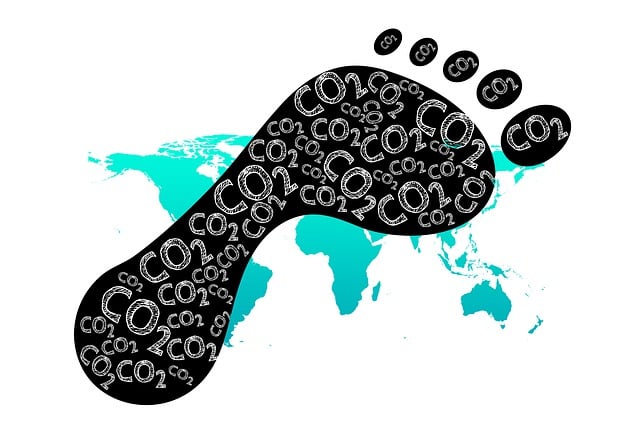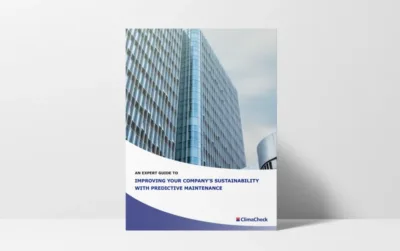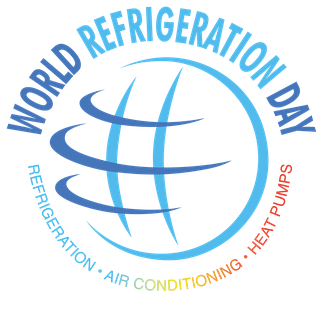HVACR optimisation and the potential reduction of CO2!

Welcome! Let us guide you through the opportunities, multiple benefits, and optimisation potential in Air Conditioning, Refrigeration and Heat Pump (HVACR) systems, which will reduce the need for energy and lower CO2 emissions globally.
As you know, climate change is happening and it won’t pause or slow down while you read this article. However, you might find a useful tool to decrease your organisation’s negative impact on the environment. The effects of climate change are numerous, including extreme weather, ocean warming, loss of biodiversity, and impacts on agriculture and food security already evident worldwide.
A central problem driving these changes is high CO2 emissions caused by humans, which are closely linked to high energy consumption and burning of fossil fuels. Hence the increasing focus on replacing fossil fuels with green energy. Simultaneously, energy efficiency is looming in the shadows, as its full potential is often forgotten (since it isn’t always known).
Multiple organisations (e.g., WWF, IEA, and Mission Innovation) have evaluated energy efficiency and the saving potential it brings. It is also concluded that HVACR optimisation will be necessary, and the potential is huge. It is possible to reduce CO2 emissions by hundreds of millions of tons just by optimising HVACR systems, with the help of ClimaChecks technology. The saving potential (if fully or partly utilised) results in a decreased need for energy which accelerates the phase-out of fossil fuels.
Let us tell you how!
HVACR systems worldwide.
You might already be aware that HVACR systems consume more than 20% of the world’s electricity. However, did you know that:
- In many buildings, HVACR systems consume between 30-60% of the electricity.
- For countless companies the HVACR system is business critical, as it supplies the cooling or heating needed for the core business.
- An HVACR system is often a large investment that is expected to be efficient for many years.
- Performance is rarely analysed and taken for granted as long as the “right” temperature is reached.
- Commissioning is not done in the most efficient way.
- It is often possible to save between 10-30% on energy consumption at a low investment cost.
- It is possible to avoid breakdowns and downtime.
- Working with performance analysis and optimisation lowers the Life Cycle Cost (LCC)
Knowing this, it is easy to understand how central HVACR systems are in many organisations. Therefore, it is astonishing to see how poorly these critical systems can be managed and still be considered functional…
This acceptance is due to a ‘business as usual’ mindset, with limited focus on HVACR system performance. Conventional (preventive and reactive) maintenance methods focus more on runtime or fixing breakdowns after they occur, rather than on the system’s condition. Which often makes them inefficient from a performance, energy and sustainability perspective, leaving an enormous saving potential untapped.
Claiming that conventional maintenance is inefficient can be seen as a bold statement, as the industry is enormous, with millions of units delivered every year, billions paid in service, and constant discussions on efficient chillers and heat pumps with higher COP than the last one.
However, based on tens of thousands of analysed systems worldwide and the huge saving potential we usually see during the lifetime of the units, the statement isn’t so bold.
Include HVACR optimisation in your sustainability work, or you will struggle to reach “net zero”…
Chillers and heat pumps are critical in HVACR systems and the major energy consumer in many buildings. Over the years we have analysed tens of thousands of units and helped partners all around the world to deliver substantial savings.
The number of systems we find with problems (we rarely find systems running perfectly) makes us certain that all businesses can benefit from a higher focus on HVACR systems.
There are a couple of steps to include chillers and heat pumps in your sustainability work, all of which can be found in our guide (free download here) if you want to dive deeper. In this article we are going to highlight three steps.
- Collect data.

- Analyse the data to get actionable information.
- Make sure the information is used.
- Energy optimisation
- Predictive maintenance.
You might think these three steps already are fully implemented today as sensors are everywhere and modern BMS/SCADA systems are moving into many buildings, but they are not.
A lot of data is collected, that’s for sure. A common problem surfacing now is that even with all the data, many problems are still present, and breakdowns happen as before. This leads us in to the second point, analyse the data!
This is a crucial step, as analysis will “produce” actionable information that is essential to avoid performance drift and breakdowns. When you have the information, you need to ensure that it is used both for energy optimisation as well as predictive maintenance. If the information isn’t used, you are at high risk of using both energy and money unnecessarily.
Using the information effectively will reduce your organisation’s environmental footprint.
The global impact when you are doing things right!
The challenge of reducing CO2 emissions is critical in the fight against climate change.
On a global scale, we estimate that it is possible to save a few percentages of the global electricity consumption (10-30% saving potential of ~20% global electricity consumption by HVACR systems). Imagine the impact of reducing Europe’s energy consumption by approximately 3%…
The ClimaCheck method is well proven, and the potential is astonishing! In 2011, ClimaCheck was awarded “WWFs climate solver”. To receive this award, you need to have a cutting edge technology that can reduce carbon emission with 20 million tonnes annually (for 10 years).
WWF estimates the potential of our technology to achieve a remarkable reduction of CO2 emissions by up to 72 MtCO₂e/year. To put this into perspective, it’s comparable to the entire annual CO2 emissions of a country like Portugal.
This comparison not only showcases significant environmental impact but also underscores the global optimisations potential of heat pump and cooling system.
Mission Innovation has also calculated the impact of optimisation based on our performance analysis and estimating it to be over 100 MtCO₂e/year.
Conclusion and Organisational Impact
Optimising HVACR systems presents a substantial opportunity for reducing energy consumption and CO2 emissions, which are critical in combating climate change. Many organisations can achieve significant energy savings and environmental benefits by adopting advanced optimisation technologies, shifting to predictive maintenance, and continuously analysing system performance.
By integrating HVACR optimisation into the sustainability strategies, investing in staff training, leveraging financial incentives, and collaborating with industry experts, organisations can enhance operational efficiency and contribute to global carbon reduction efforts. Implementing a strategy to use data and turn it into actionable improvements will further ensure the achievement of these goals, supporting both environmental and economic sustainability.
These improvements will also align with new regulations and tougher requirements from the society as well as laws.
Next step.
Are you comfortable that your HVACR system runs perfect, and if the performance deviates an early warning is sent to the right person and performance drift and a potential breakdown is avoided?
If you want to do a quick checkup you can fill out our checklist which will give you some insight in the status of your organisation. If you want our help directly to kickstart your HVACR optimisation, do not hesitate to contact us.
Read more here:
More news
Partner Spotlight: Neena Gill on the Climate Hero Club Podcast
In the episode, Neena shares her ClimaCheck experience and insights on why improving HVACR efficiency is one of the fastest and most cost-effective ways to reduce energy use and emissions.

World Refrigeration Day 2025 – Technology, Climate Action and an Industry Progressing into the Future.
June 26th marks World Refrigeration Day, a day to recognise the technology that enables life as we know it.

Office Hours During Midsummer Celebrations and the Summer
We wish you a joyful Midsummer celebration filled with happiness
